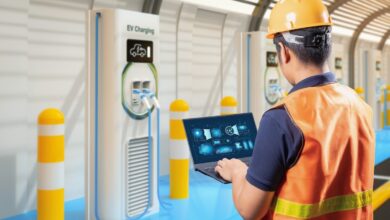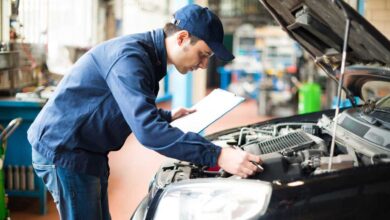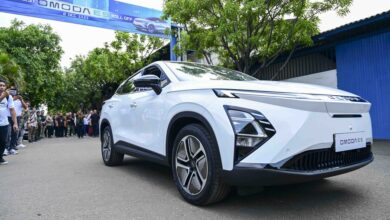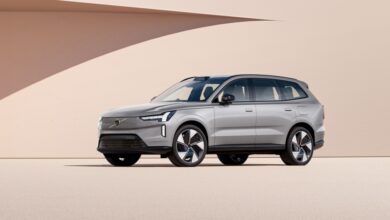Is China’s E.V. Industry a Threat to the U.S.?
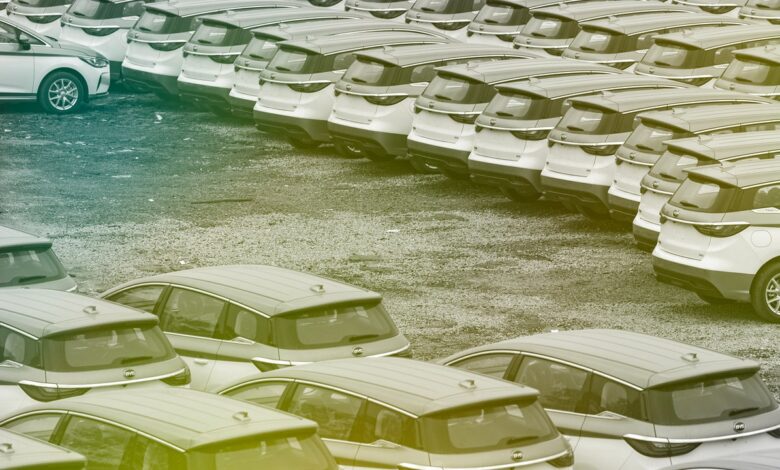
After President Joe Biden announced last month that he was quadrupling the tariffs on Chinese electric vehicles, which tend to be much cheaper than E.V.s sold in this country, he ran into charges that he was undercutting his environmental commitments. The Democratic governor of Colorado, Jared Polis, called the decision “horrible news for American consumers and a major setback for clean energy.” Robert Lawrence, a trade expert at Harvard’s Kennedy School, told The Hill, “What Biden has done is to underscore that he prefers trade protectionism to decarbonizing the economy.”
In a recent conversation with me, Heather Boushey, a member of the White House Council of Economic Advisers, insisted that the new policy measures were consistent with the Biden Administration’s climate goals, which include cutting emissions in the power sector to zero by 2035 and creating an entirely emissions-neutral economy by 2050. To meet these targets, the Administration has introduced a range of policies on E.V.s, which include extending tax credits to people who purchase them, giving subsidies to automakers that build them, and now, somewhat counterintuitively, raising tariffs on Chinese E.V.s and batteries. “This is an industrial strategy, but it is also about the climate,” Boushey said. “This is about building up a domestic industry and technologies that are key to the clean-energy future.” She pointed out that China had established a “choke hold” on some critical components, such as graphite, used for E.V. batteries. “From a policy perspective, it makes no sense to cede control of these vital industries,” she said.
The timing of the new tariffs can’t be divorced from the upcoming election and from Biden’s determination to show voters in battleground states that he is standing up to China and protecting U.S. jobs. In a call with reporters, Lael Brainard, one of the President’s top economic aides, said, “We know China’s unfair practices have harmed communities in Michigan and Pennsylvania and around the country.” But another factor that surely played into the announcement is the remarkable growth of Chinese E.V. makers, particularly BYD Auto, which is now selling low-cost E.V.s in Europe, Southeast Asia, and Latin America, as well as in its home market. In Mexico, for example, the zippy BYD Dolphin Mini hatchback costs roughly the equivalent of twenty-one thousand U.S. dollars. With General Motors having halted the production of the Chevy Bolt, the cheapest E.V. readily available in the United States is the Nissan Leaf, which starts at around twenty-eight thousand dollars, and has a shorter range than the BYD model. Here, the average cost of an E.V. is fifty-five thousand dollars, and the cheapest model from Tesla, which still accounts for more than half of the country’s E.V. sales, starts at about forty thousand dollars.
BYD doesn’t sell any cars in the United States yet and says it has no plans to do so. (Earlier this year, it said it was scouting locations for a plant in Mexico, but only to supply the Mexican market.) Still, the prospect of cheap Chinese E.V.s flooding the U.S. has alarmed American officials and automakers, which are finally making substantial investments in a transitioning away from internal-combustion engines. “I think that everybody was surprised by how fast BYD got to be so good,” Susan Helper, an economist at Case Western Reserve University who served in the Biden Administration until earlier this year, told me. Other Chinese E.V. manufacturers, including Nio and Xpeng, have indicated an interest in selling their cars in the United States. In February, the Alliance for American Manufacturing, a trade group, warned that the arrival of cheap Chinese E.V.s could be an “extinction-level event” for U.S. automakers.
Given that some protectionists in Congress have been calling for a complete ban on Chinese E.V.s, and Donald Trump has vowed to impose even bigger tariffs on Chinese goods than Biden has, it seems extremely unlikely that Americans will be able to buy cheap Chinese E.V.s anytime soon. That makes it even more imperative that the domestic transition to producing E.V.s proceeds, and does so rapidly. It seems worth finding out whether we can learn something from China, which built an E.V. industry practically from scratch.
Part of Chinese E.V. companies’ success can be attributed to lower wages, in addition to lax labor and environmental standards. We certainly wouldn’t want to mimic any of that. There are no independent labor unions in China, and the average manufacturing wage is equivalent to about ten thousand U.S. dollars a year, including overtime pay. There is also evidence that forced labor, involving Uyghur workers, has been used in parts of the Chinese supply chain for lithium-ion batteries. However, labor costs make up a relatively small part of total car-production expenses—less than twenty per cent, in many cases. Chinese E.V. manufacturers have also made significant advances in design and manufacturing, often by taking technologies and processes that were invented elsewhere and improving them. “A lot of Chinese car companies, their big success has come in learning by doing,” Ilaria Mazzocco, an expert on China’s industrial policy at the Center for Strategic and International Studies, in Washington, D.C., told me. “By innovating in production techniques, they have been able to reduce costs, and then reinvest capital in research and development.” Kyle Chan, a Princeton researcher who writes on industrial policy and clean-energy technology, pointed to three areas where Chinese E.V. makers have made impressive progress: developing lithium-ion batteries, casting aluminum car frames, and using computer simulations in the design process.
Undoubtedly, the Chinese government has played a vital role in promoting the industry, too. Its support comes in many forms, including some tactics that are being used in this country: subsidies for E.V. makers; tax breaks for E.V. purchases; directives on electrification and emissions reduction; and help from local governments, which have given E.V. makers cheap land, tax relief, and even, in some cases, financial bailouts. In regard to these policies, one considerable difference between China and the United States is scale. “China’s industrial policy spending is enormous, totaling at least 1.73 percent of GDP in 2019,” according to a new report by Mazzocco and two of her colleagues at C.S.I.S. “In dollar terms, China spends more than twice as much as the United States.”
One message from this report seems to be that you can’t do effective industrial policy on the cheap. Three other aspects of China’s approach also bear close inspection. The first one is persistence. In the U.S., industrial policies tend to change whenever a new party comes to power, or whenever a beneficiary suffers a financial setback, such as the 2011 bankruptcy of Solyndra, a California solar-panel maker that had obtained more than five hundred million dollars in loan guarantees from the Department of Energy. After Solyndra’s collapse, the Obama Administration didn’t abandon its clean-energy subsidies, but officials tightened loan requirements and became more cautious about extending them. This doesn’t happen in China. “You see a doubling down when the industry is going through a rough patch,” Chan said. “From a market perspective, the last thing you want to do is invest into a failing market. They have done that quite a few times.” The solar-panel industry is a good example. After the ruinous price war that hurt Solyndra and other manufacturers, the Chinese government continued to support its domestic industry, and Chinese firms now dominate it globally.
Another noteworthy feature of Chinese policy is that, rather than favoring incumbents, it has encouraged new entrants and manic competition. There are more than a hundred E.V. makers in China, and that’s down from about five hundred in 2019. In such a crowded market, firms have been forced to cut costs and prices, which has benefitted consumers and boosted sales. Earlier this year, BYD launched a new model that sells for ten thousand dollars. In the United States, Tesla largely had the E.V. market to itself for a decade or so, as the Big Three focussed on gas-guzzling S.U.V.s and pickup trucks. (This strategy generated large profits for the traditional carmakers but left them far behind Tesla and Chinese companies in developing E.V.s.) “It’s not pure central planning,” Helper said, of the Chinese approach. “There is a market test eventually. They seed a whole bunch of companies, and only a few survive. The principle of combining planning and competition is something we can learn from.”
A third aspect of Chinese policymaking that the U.S. should take note of is its flexibility. Over the years, China has tried a bit of everything, including encouraging local firms to partner with foreign companies. The experts I spoke with said that the U.S. should emulate this approach by allowing American automakers to team up with Chinese firms that have industry-leading technology. “If you build something in ten years that the Chinese can build tomorrow, the question is: at what cost?” Mazzocco said. “I understand, there is an element of reinventing the wheel that has to be done, but there also needs to be a balance.”
A couple of American carmakers—Ford and Tesla—have already announced plans to partner with Chinese companies, but they have run into political opposition. After Ford announced that it was building a new lithium-ion-battery plant in Michigan using technology licensed from CATL, a leading Chinese battery maker, Republican politicians objected and Ford put its plans on hold. (It is now going ahead with a scaled-down version of the plant.) Helper said that Ford’s partnership with CATL was a “sensible way to proceed” as long as it has a “good agreement and the Chinese will reveal the secret sauce.” She also said she wouldn’t be against eventually allowing BYD and other Chinese companies to build U.S. plants as long as they pay U.S. market wages and meet U.S. standards in other areas, including the sourcing of components.
Chan pointed out that there is a historical precedent for this kind of arrangement: the treatment of Japanese automakers in the nineteen-eighties. Back then, there were similar concerns about cheap, fuel-efficient cars from Toyota and Honda flooding the U.S. market and destroying the Big Three. The Reagan Administration limited imported vehicles, but eventually allowed the Japanese companies to build plants in the United States. American carmakers copied some of their methods. “The U.S. automakers were able to learn and improve,” Chan said, and he added that we should adopt a similar approach with Chinese car companies.
Given the current climate, in which practically anything to do with China is highly politicized, such an outcome seems unlikely. Judging by polls, many Americans agree with the idea of protecting crucial U.S. industries from Chinese competition and view China’s economic development as more of a threat than an opportunity. For now, it looks like Americans searching for a cheap E.V. will have to settle for a Nissan Leaf or wait for Tesla to build its long-awaited mass-market Model 2 or for one of the new ventures to bear fruit. ♦
